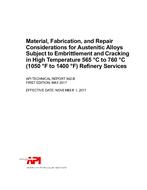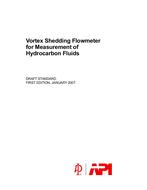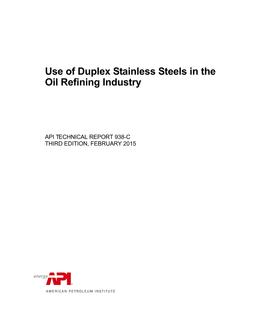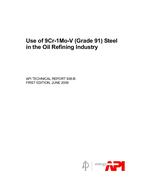Description
This recommended practice (RP) provides guidance to engineering and plant personnel on equipment and piping design, material selection, fabrication, operation, and inspection practices to manage corrosion and fouling in the wet sections of hydroprocessing reactor effluent systems. The reactor effluent system includes all equipment and piping between the exchanger upstream of the wash water injection point and the cold, low-pressure separator (CLPS). The majority of these systems have an air cooler, however, some systems utilize only shell and tube heat exchangers. Reactor effluent systems are prone to fouling and corrosion by ammonium bisulfide (NH4HS) and ammonium chloride (NH4Cl) salts.
An understanding of all variables impacting corrosion and fouling in these systems is necessary to improve the reliability, safety, and environmental impact associated with them. Past attempts to define generic optimum equipment design and acceptable operating variables to minimize fouling and corrosion have had limited success due to the interdependence of the variables. Corrosion can occur at high rates and be extremely localized, making it difficult to inspect for deterioration and to accurately predict remaining life of equipment and piping. Within the refining industry, continuing equipment replacements, unplanned outages, and catastrophic incidents illustrate the current need to better understand the corrosion characteristics and provide guidance on all factors that can impact fouling and corrosion.
Product Details
- Edition:
- 2nd
- Published:
- 03/01/2012
- File Size:
- 1 file , 1.5 MB
- Redline File Size:
- 2 files , 2.6 MB
- Product Code(s):
- C932B02, C932B02, C932B02
- Note:
- This product is unavailable in Cuba, Iran, North Korea, Syria




